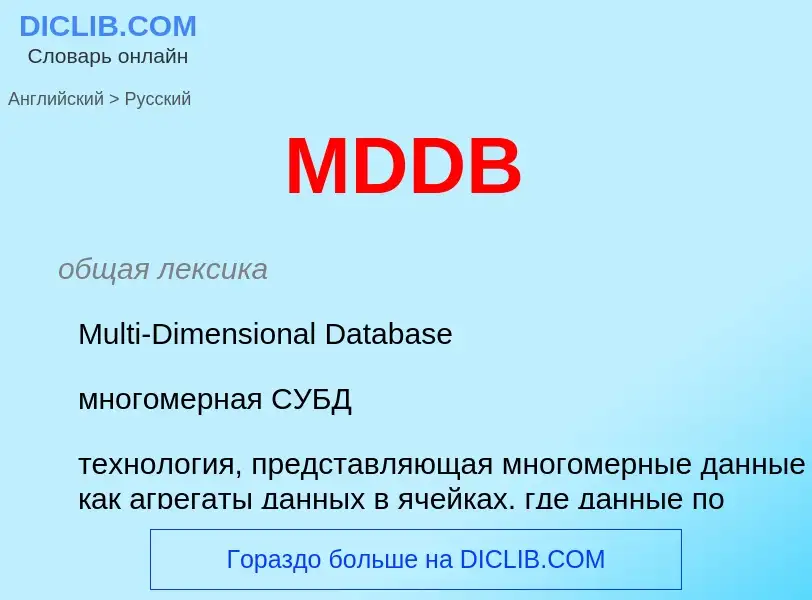Перевод и анализ слов искусственным интеллектом ChatGPT
На этой странице Вы можете получить подробный анализ слова или словосочетания, произведенный с помощью лучшей на сегодняшний день технологии искусственного интеллекта:
- как употребляется слово
- частота употребления
- используется оно чаще в устной или письменной речи
- варианты перевода слова
- примеры употребления (несколько фраз с переводом)
- этимология
MDDB - перевод на русский
общая лексика
Multi-Dimensional Database
многомерная СУБД
технология, представляющая многомерные данные как агрегаты данных в ячейках, где данные по разным направлениям пересекаются
Смотрите также
общая лексика
Hybrid OLAP
гибридный OLAP
один из видов систем оперативного анализа данных (см. OLAP), в котором исходные данные размещаются а реляционной БД, а агрегатные - хранятся в многомерной БД
Смотрите также
Википедия
Online analytical processing, or OLAP (), is an approach to answer multi-dimensional analytical (MDA) queries swiftly in computing. OLAP is part of the broader category of business intelligence, which also encompasses relational databases, report writing and data mining. Typical applications of OLAP include business reporting for sales, marketing, management reporting, business process management (BPM), budgeting and forecasting, financial reporting and similar areas, with new applications emerging, such as agriculture.
The term OLAP was created as a slight modification of the traditional database term online transaction processing (OLTP).
OLAP tools enable users to analyze multidimensional data interactively from multiple perspectives. OLAP consists of three basic analytical operations: consolidation (roll-up), drill-down, and slicing and dicing.: 402–403 Consolidation involves the aggregation of data that can be accumulated and computed in one or more dimensions. For example, all sales offices are rolled up to the sales department or sales division to anticipate sales trends. By contrast, the drill-down is a technique that allows users to navigate through the details. For instance, users can view the sales by individual products that make up a region's sales. Slicing and dicing is a feature whereby users can take out (slicing) a specific set of data of the OLAP cube and view (dicing) the slices from different viewpoints. These viewpoints are sometimes called dimensions (such as looking at the same sales by salesperson, or by date, or by customer, or by product, or by region, etc.).
Databases configured for OLAP use a multidimensional data model, allowing for complex analytical and ad hoc queries with a rapid execution time. They borrow aspects of navigational databases, hierarchical databases and relational databases.
OLAP is typically contrasted to OLTP (online transaction processing), which is generally characterized by much less complex queries, in a larger volume, to process transactions rather than for the purpose of business intelligence or reporting. Whereas OLAP systems are mostly optimized for read, OLTP has to process all kinds of queries (read, insert, update and delete).

